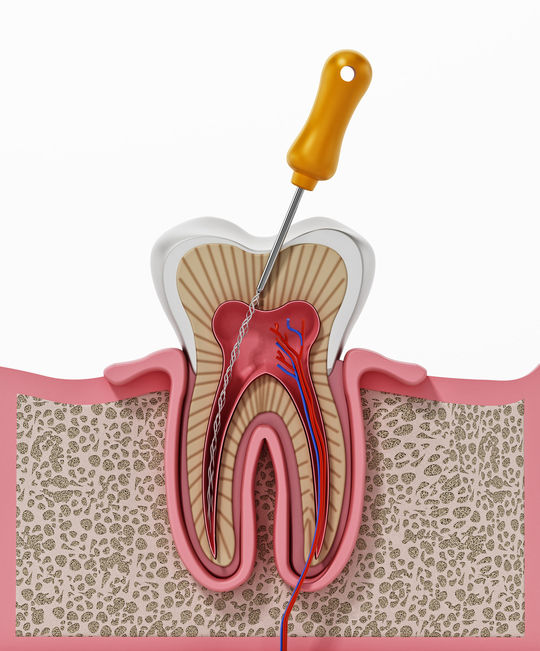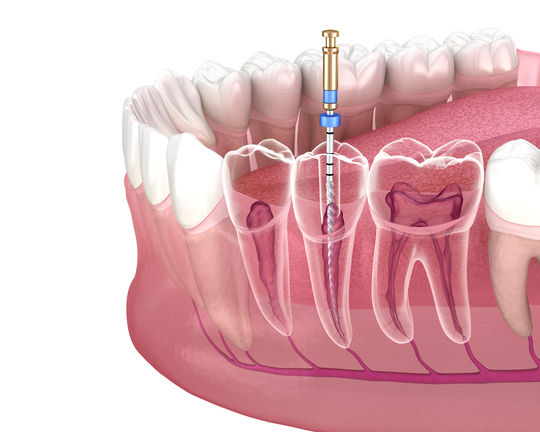1) What is root canal treatment?
A Root canal is a procedure where we try to save and repair an infected tooth or a damaged tooth by cleaning the tooth thoroughly, the infected tissue or pulp is removed and then the tooth is completely disinfected from inside.
Once the tooth is disinfected and there is no sign of pain or pus then we fill the tooth with a material flowing through the canals and covering the crown portion of the tooth.
This procedure is always done under local anesthesia so that the patient has no pain during the procedure.
With this treatment, an extensively decayed tooth can be saved and brought in function.


